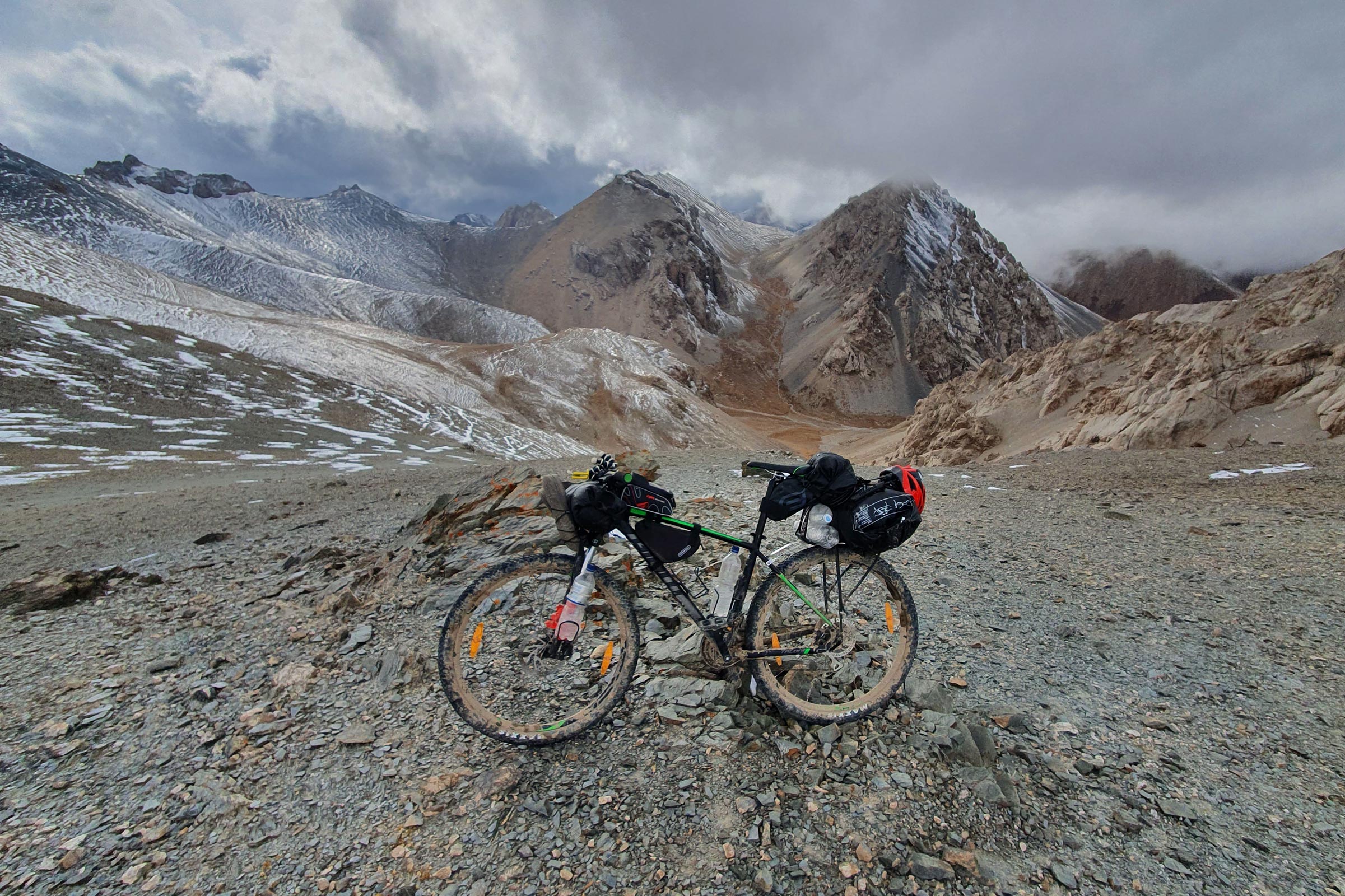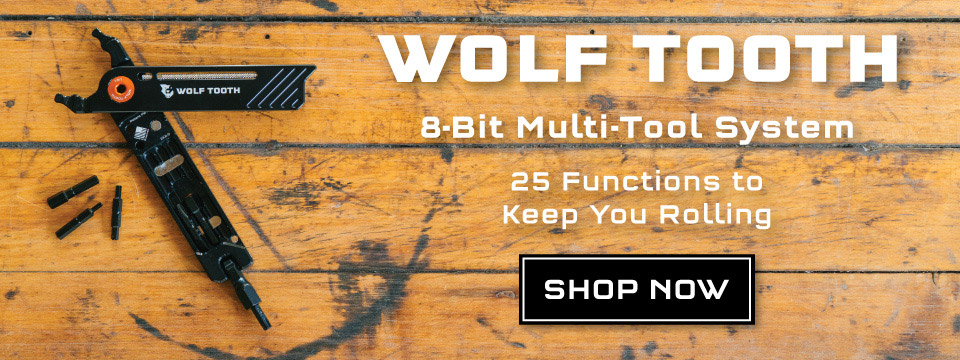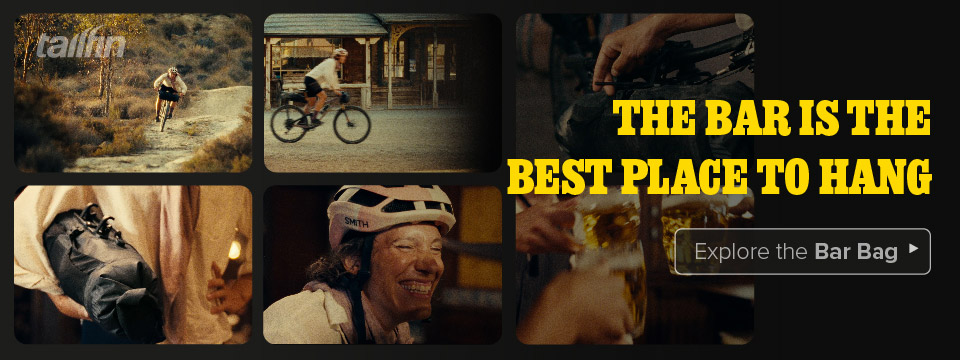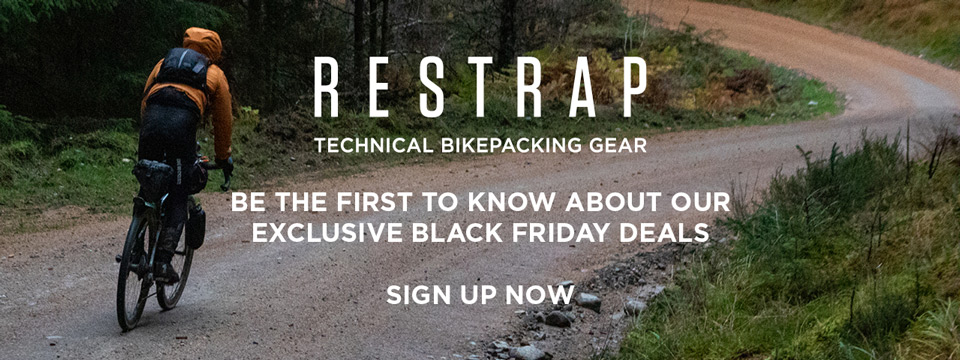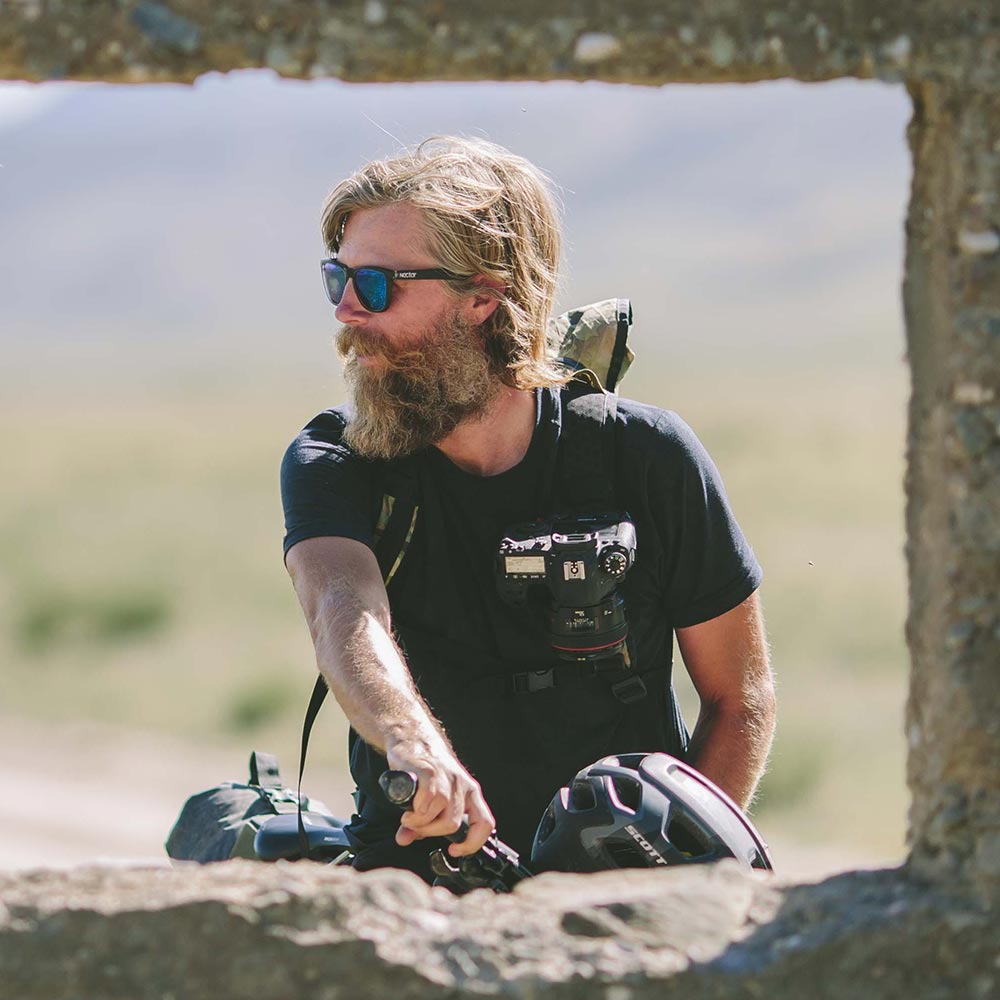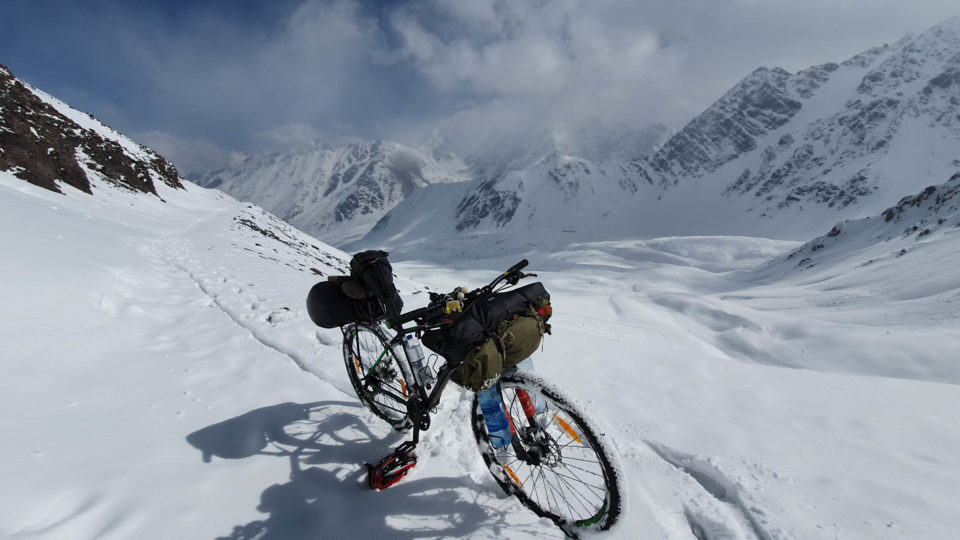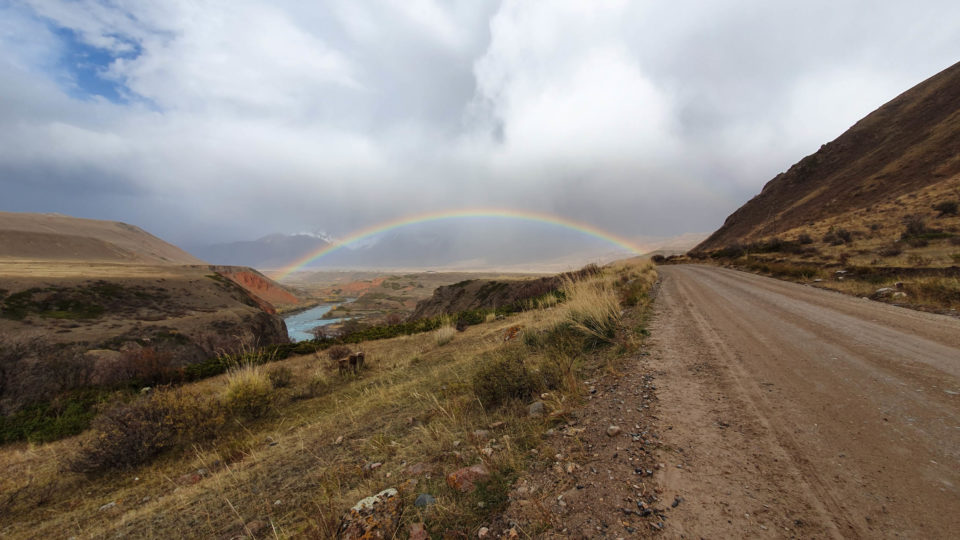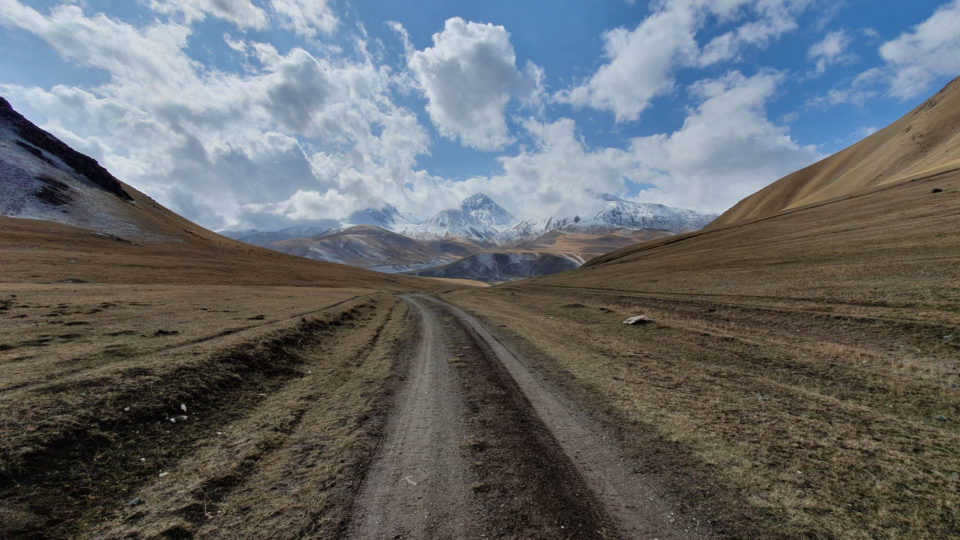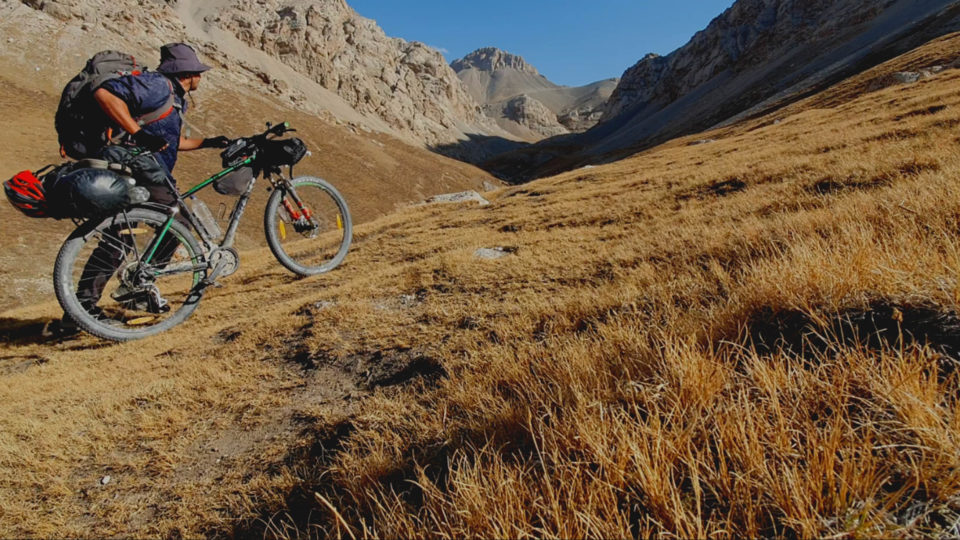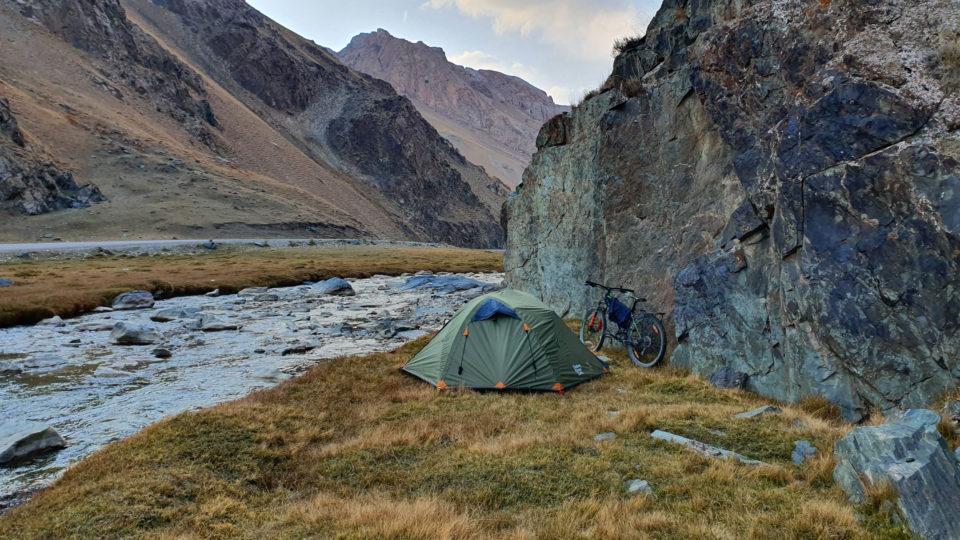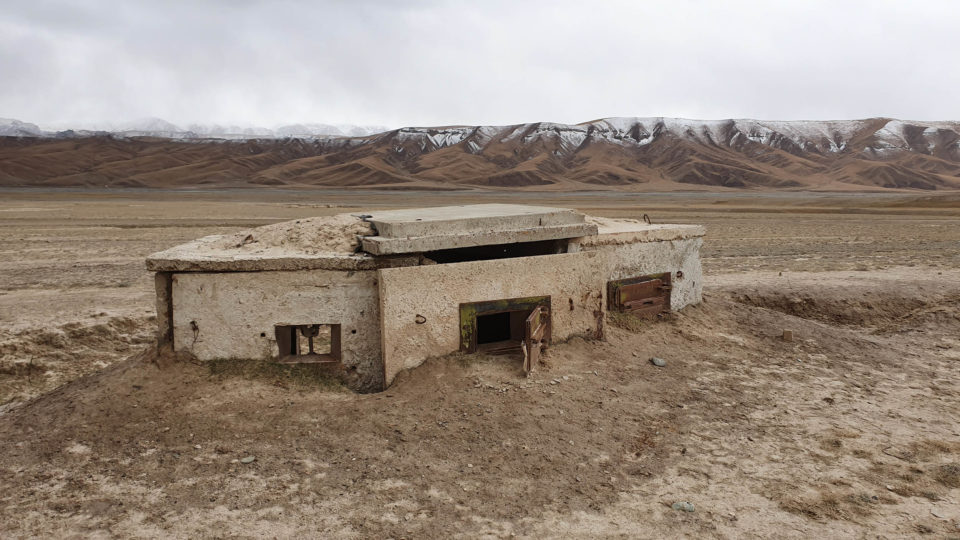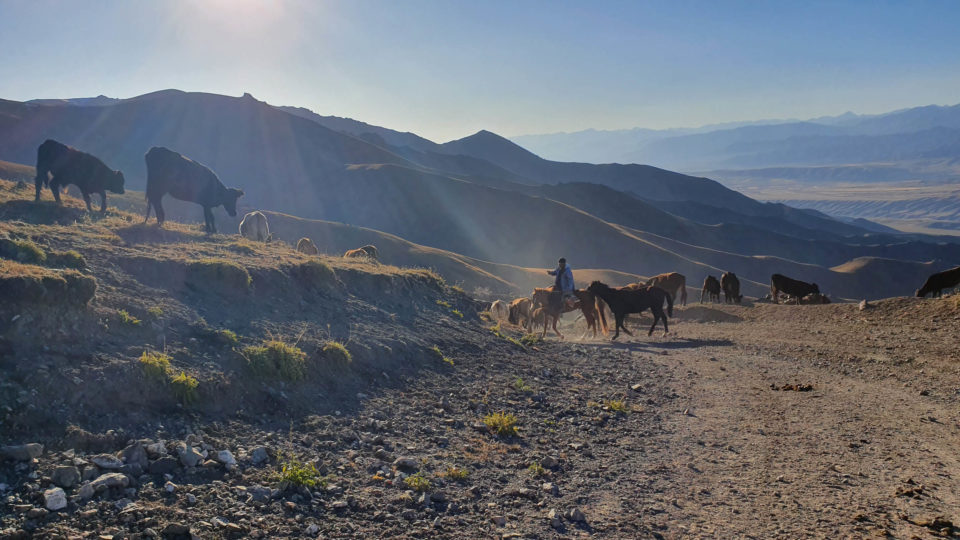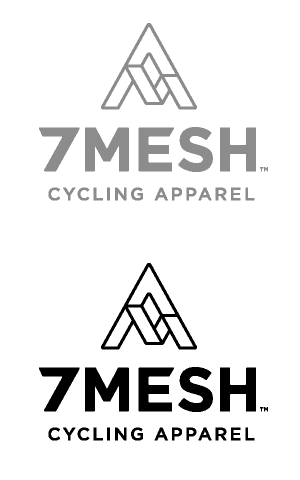Alone in Kyrgyzstan
This three-part video series follows the bikepacking journey of Lewi Blake as he travels through the vast mountain landscapes of Kyrgyzstan during winter. Watch it here alongside a photo gallery from the trip and an interview with Lewi…
PUBLISHED Aug 3, 2020
On not much more than a whim, Lewi Blake went to Kyrgyzstan without a bike or gear to tackle part of our Tian Shan Traverse bikepacking route. After spending a week in Bishkek procuring all the equipment he needed for a two-month trip, he pedaled into the mountains. Along the way, Lewi shot three videos using a small drone and his smartphone. Watch each one here, alongside a gallery of photos from the trip and an interview with the filmmaker…
What made you decide to go Bikepacking in Kyrgyzstan?
The truth is, I’d never even heard of Kyrgyzstan until about two months before flying there to do this bikepacking trip. It had been almost two years since I cycled from Ecuador to Chile in 2017. That trip was a turning point in my life where I discovered the freedom allowed by bikepacking. However, once I returned home from that trip, life got in the way and bikepacking vast empty spaces became a distant memory.
I spent the first half of 2019 backpacking (without a bike) with my girlfriend through South East Asia and India. As we were hiking through the Himalayas, all of my great bikepacking memories in South America started coming back. It must have been those beautiful snow-capped mountains that made me decide I needed to take on another bikepacking trip.
For some reason, I couldn’t get Kyrgyzstan out of my head. I think because I’d never even heard of it two months prior, I was so intrigued by it that I just had to go. Within a few weeks, my girlfriend stayed in Sri Lanka and I headed into the mountains of Kyrgyzstan.
What time of year was this trip, and what made you decide to go during a risky season?
The trip through Kyrgyzstan and Kazakhstan took around two months. I was there during November and December, which I believe is the end of autumn, coming into winter. I didn’t realize that there would be as much snow as there was during those months. As I approached the first mountain, the locals all warned me that it was impossible to pass at the moment due to the snow being one meter deep at the top. The shepherds weren’t even crossing over at this stage as they were going to wait a few days for the storm to pass. I thought I would continue up as far as I could, and if the snow got too deep, I would just cycle back down. It was pretty scary as I was waiting out the storm in my tent near the top of the mountain one night, listening to the wolves howl.
I came to Kyrgyzstan looking for an adventure and that’s exactly what I found.
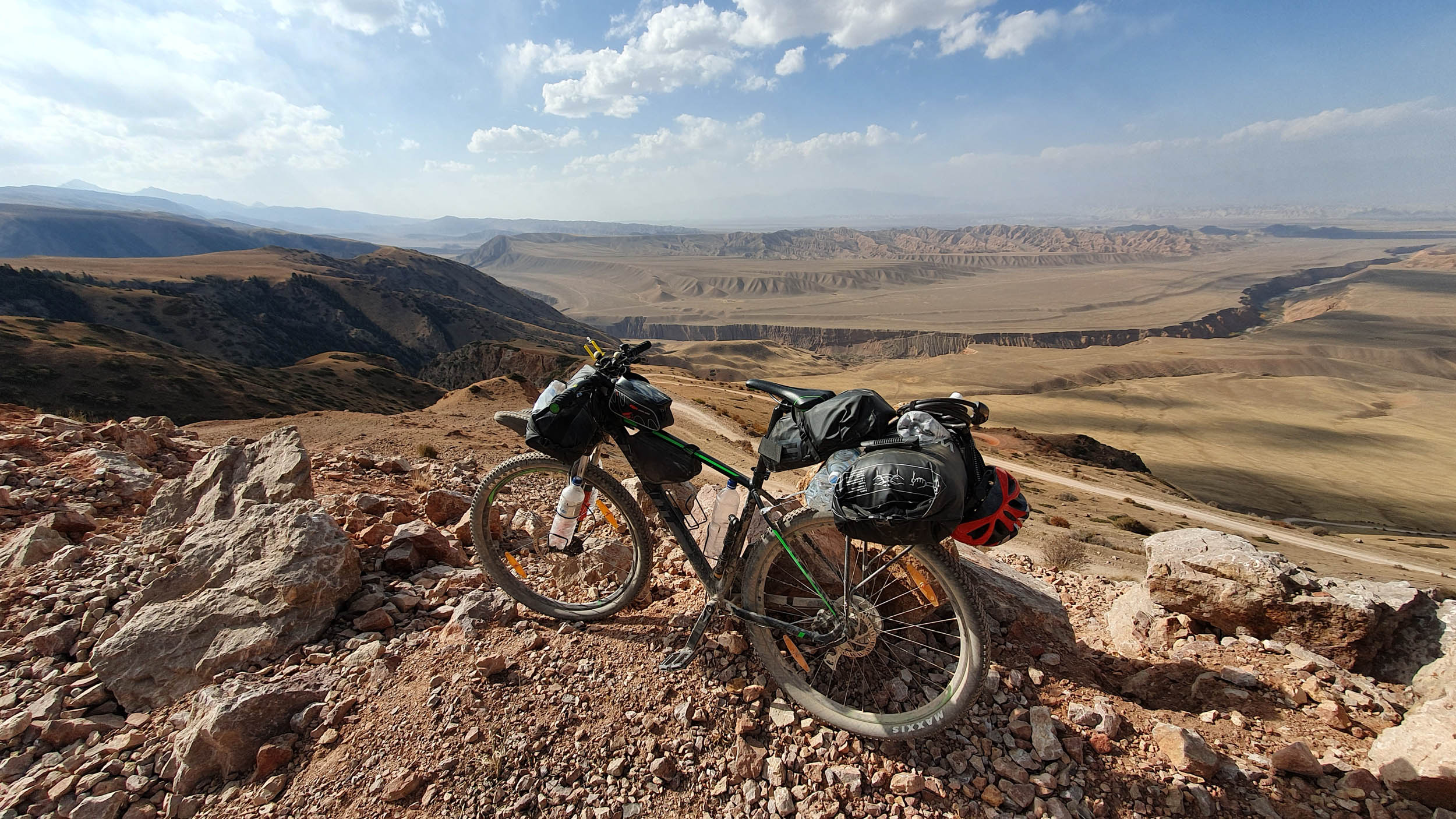
You mentioned having to outfit your trip in Bishkek, once in Kyrgyzstan. Tell us about the bike and bags you got for the journey.
As I said, I was backpacking in Asia for about six months before deciding to go to Kyrgyzstan. It didn’t make sense for me to return home to prepare my bicycle and gear, and then fly back to Kyrgyzstan. Melbourne is just too far away. So I arrived in Bishkek a week before I planned to set off into the wilderness. I didn’t care about having the best and most expensive gear, and frankly, I couldn’t afford it.
In short, I needed to buy a bike and some bikepacking bags to carry my gear. Originally, I was looking to find a secondhand bike but found it difficult to communicate this with the locals. So in the end, I bought a new Giant Talon 3 29er from Gergert Sports which cost about $400 USD. The bike was heavy with sub-par components, but it didn’t really matter. I’d just have to walk the bike more than usual.
I actually did the same thing in South America and bought a cheap secondhand bike for $200 USD. It lasted over three months and 4,000km for that trip.
The bikepacking bags I bought were all no-name brand equipment that I was able to buy relatively cheap from various sports stores located in Bishkek. The total cost for all of the bike equipment including the bike, the bags, tools and spares cost less than $600USD.
Did you have any issues with your bike or gear?
Buying a relatively cheap bicycle and cheap gear is inevitably going to have some issues. The main problem I had with the bags was the handlebar bag. I somehow managed to get a big hole in it in the first few days of the trip. This meant it was no longer waterproof, so I just packed this bag with items that could get wet, such as my rain gear.
The bike itself didn’t handle too well in the mud or snow, which meant I had to walk the bike up some of the mountains. However, I would say that the most annoying part was having to do this trip with a bunch of gear that I didn’t need. Because I’d been backpacking for six months, I was carrying some bulky items that didn’t add any value to my bike trip, including things such as a laptop, speaker, and extra clothing. These were all items I didn’t want to throw out, so I had to take them on the bike with me.
In the beginning, I was thinking of leaving a bag of things in a hostel in Bishkek and returning to get it at the end. But finally, I decided against this; I didn’t want to feel like I had to return to Bishkek just because I had some stuff there. I wanted the trip to be flexible and I didn’t know where I was going to finish. In the end, I think this was the right decision because I ended up riding into Kazakhstan and returning home from there instead.
But as I said earlier, this trip was never about having the perfect bike and perfect gear, but going into the empty wilderness of this special country.
What equipment did you bring and how’d you carry it?
I don’t have an exact list of the equipment that I took but here’s a brief overview of what was in each bag:
I had a small saddle bag that carried my food and cooker. I also carried additional food in my backpack so I was able to carry around 10 days of food at a time. In the 30l drybag strapped to my rear rack, I had all of my sleeping gear including a tent, sleeping bag, sleeping pad, and night clothes. In my small frame bag, I carried spares and tools. I ended up putting this in my backpack most of the time as I found I was able to carry more water without the frame bag, which meant less weight on my back. In the handlebar bag, I had my rain gear, towel, and extra clothes that I didn’t need to use. And finally, in the backpack, I carried extra food, extra water, and all of my electronics including laptop, drone, gorilla pod, and all my chargers. Having the backpack was annoying in the beginning, but after a couple of days, I completely forgot I was even wearing it most of the time.
What type of video equipment did you bring along?
I used a DJI Mavic Air for all of the drone shots, which I thought turned out really well. I had three batteries, which meant I was only able to get three flights of the drone before having to find somewhere to charge them. I ended up crashing the drone into a tree after about three weeks and it stopped working. I didn’t film much of the trip after that moment.
The rest of the video was shot on my Samsung Galaxy S10 plus phone, which I also bought in Bishkek. I didn’t want to have shaky videos when I was riding and I felt the smartphone was going to be the easiest camera to use at the time. I could have bought a GoPro but I needed a new phone anyway so the smartphone made more sense.
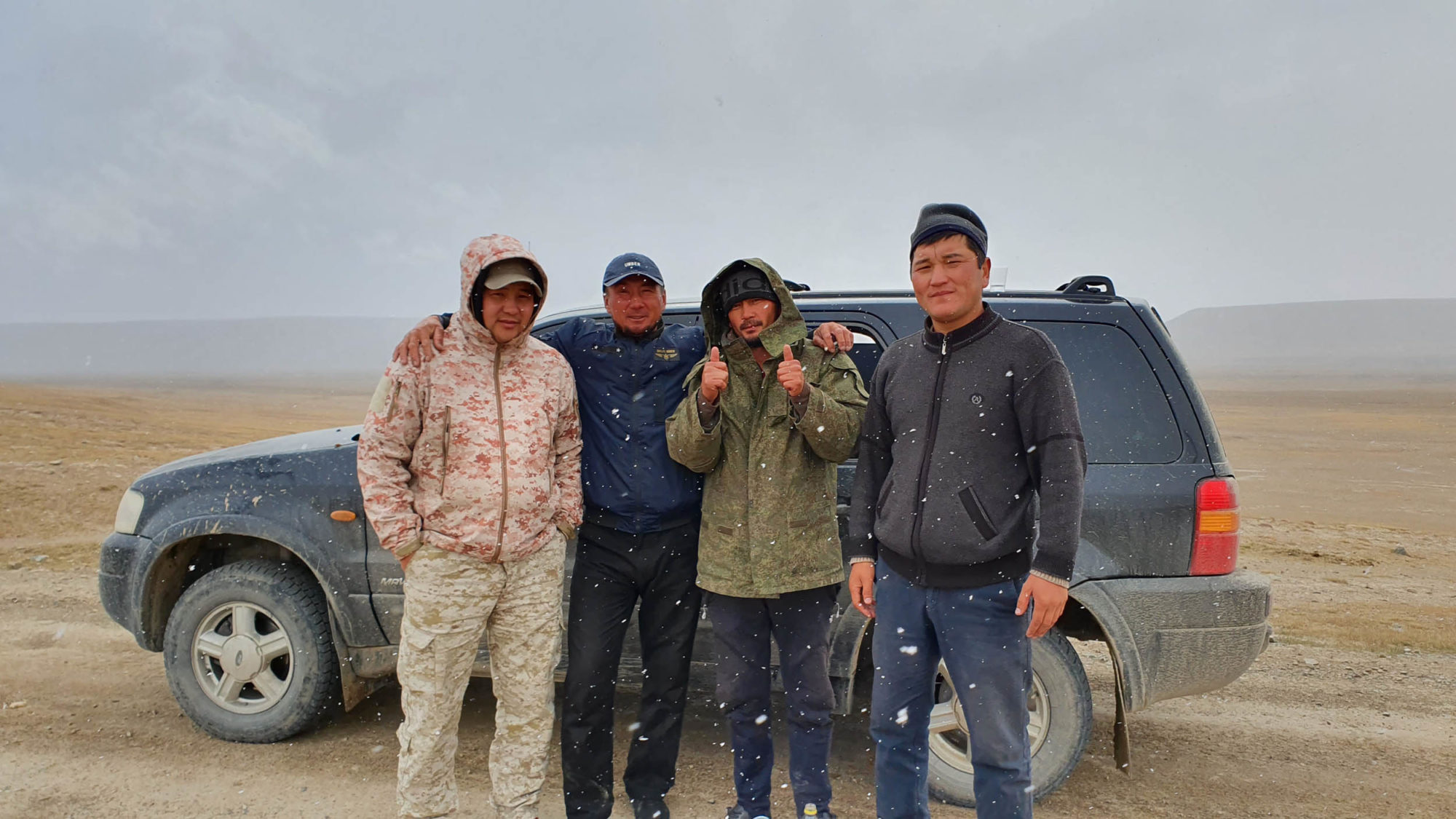
What was your route and how did you plan it?
The first half of my route was taken directly from the Silk Road Mountain Race route [aka the Tian Shan Traverse] which I first read about here on BIKEPACKING.com, although I slightly altered it at different stages. Since I spent my week of preparation looking for a bicycle and gear, I didn’t have much time to plan an exact route I was going to take. However, as the trip went on, I went onto the Alpine Quest app on my phone to find trails and plan my route into Kazakstan.
What were some of your favorite parts of the trip?
Kyrgyzstan is such a beautiful country, full of vast empty wilderness. I really did enjoy every day I had there on the bike. There was a moment, halfway through the third video, where I had to change my route as I couldn’t get my border permit printed in time. I tried to skip it by climbing over a mountain that was meant to be an old horse trail. As I got further and further up the mountain, the trail disappeared and the mountain got steeper and steeper. A storm was starting and I couldn’t go back down as it was too steep. I had to slowly walk up backwards so that I didn’t fall.
I tell you, that was a scary moment, but probably my favourite moment from the trip. It made me feel so alive. I was in the middle of nowhere in a country I didn’t know, on top of a mountain with vertical drops pushing a bloody bicycle.
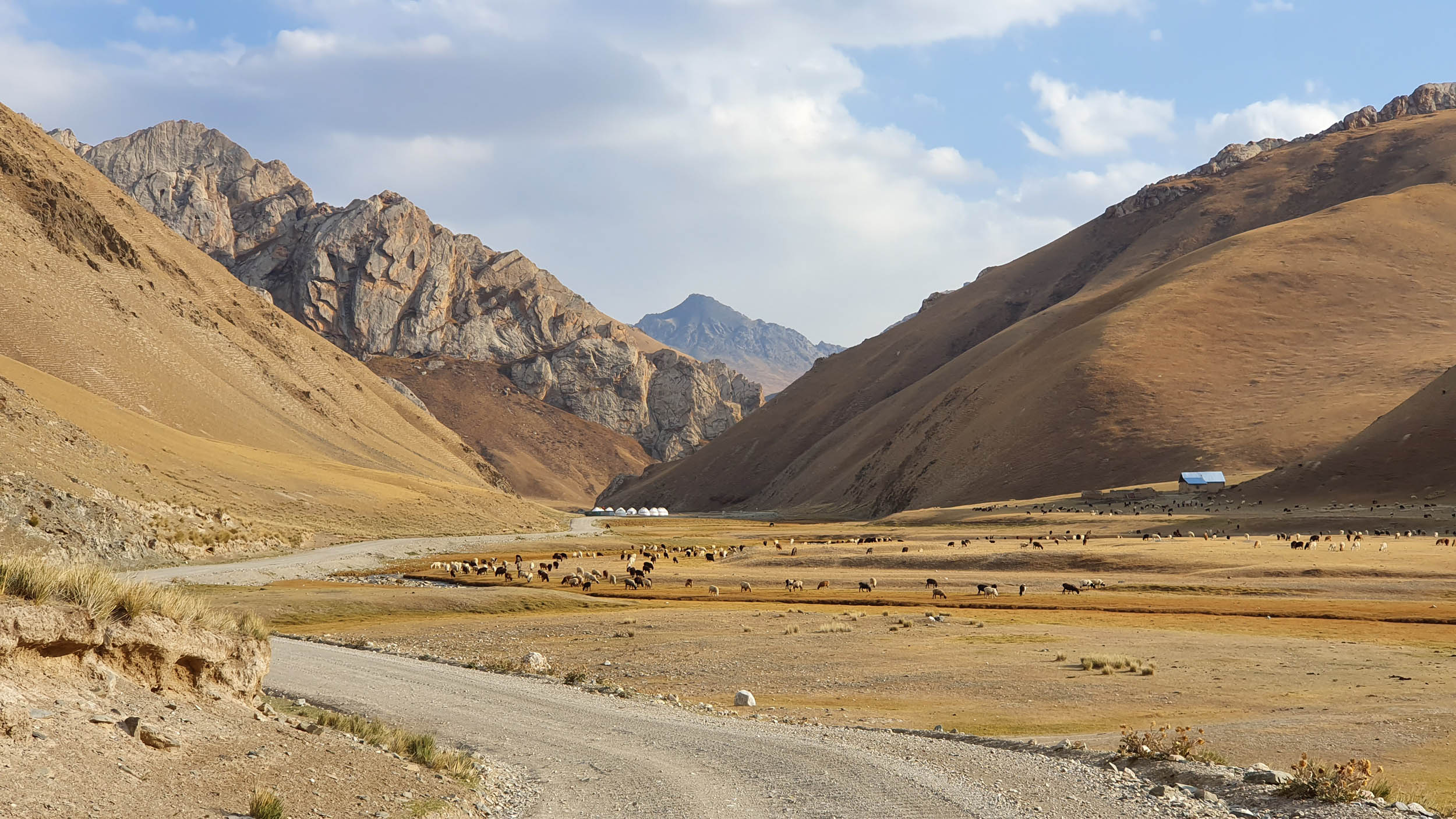
Anything else you’d like to share?
As you might be able to tell by now, this was a very spontaneous trip that ended up being one of the greatest things I’ve done in my life. It just goes to show that you don’t need the most expensive equipment to go on a bikepacking trip. Even if you have a small budget, you can buy second hand or cheap equipment.
The great thing about a bicycle is that you can take it anywhere and it will allow you to discover places you’ve never even dreamed of.
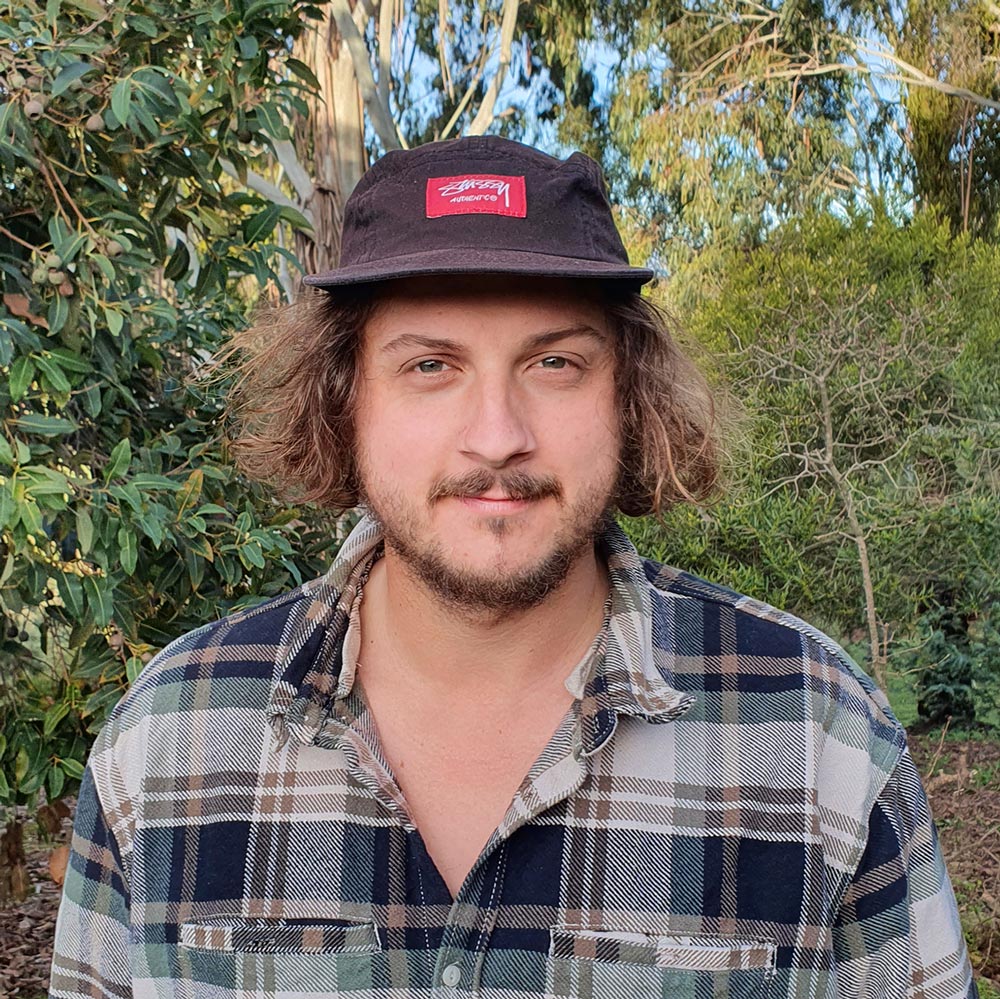
About Lewi Blake
28 year-old Lewi Blake was born in Melbourne, Australia and has been traveling the world for eight of the last 10 years. He just discovered bikepacking in 2017 and after investing in a new fatbike and camera equipment, hopes to continue sharing his bikepacking adventures through videos like these. Find more photos from this trip and follow his future adventures on Instagram @lewiblake.
Please keep the conversation civil, constructive, and inclusive, or your comment will be removed.






